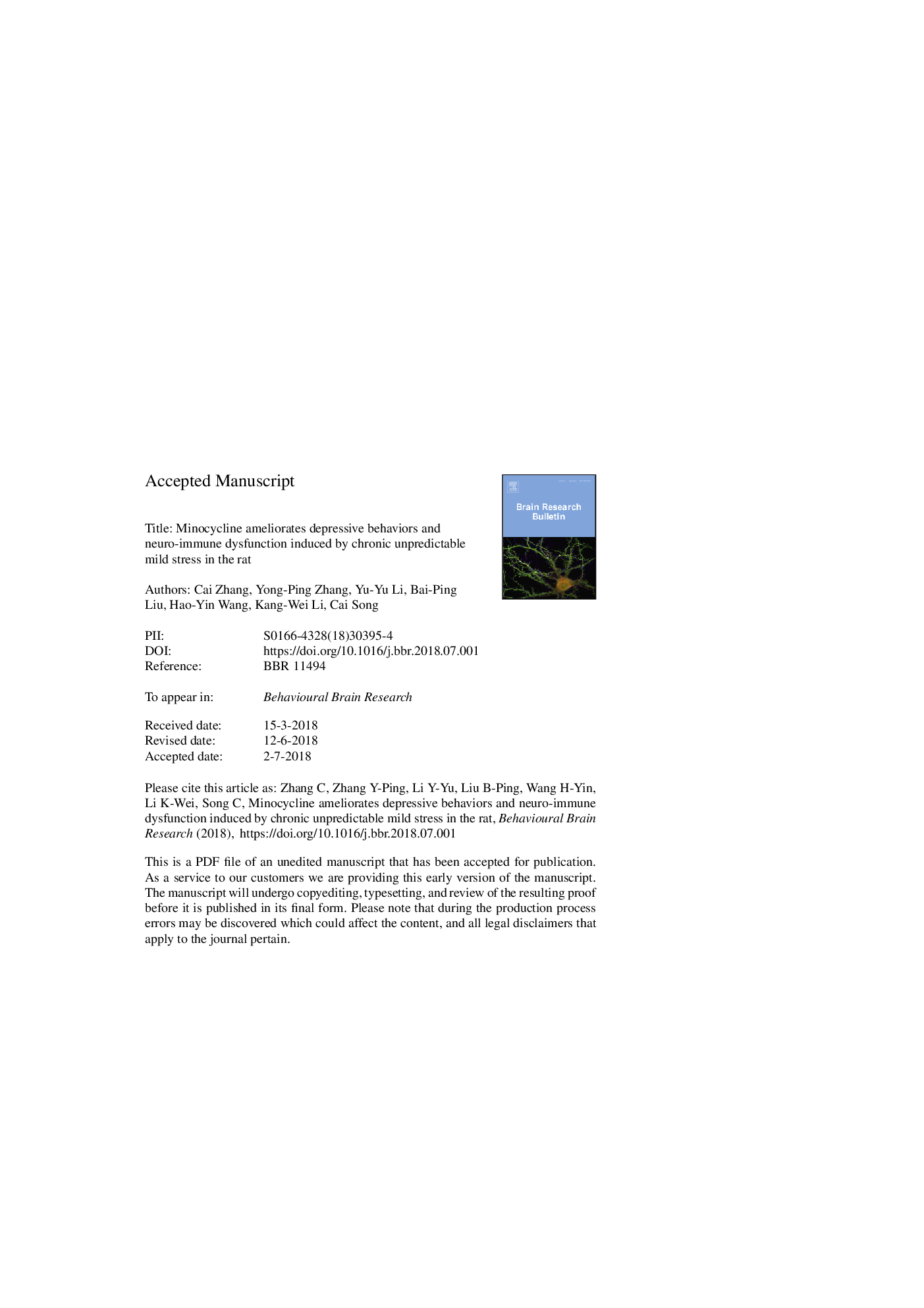| Article ID | Journal | Published Year | Pages | File Type |
|---|---|---|---|---|
| 10138317 | Behavioural Brain Research | 2019 | 31 Pages |
Abstract
Activated microglia-induced neuroinflammation can stimulate the hypothalamic- pituitary-adrenal (HPA) axis to release glucocorticoids and suppress astrocyte functions, such as reducing neurotrophin production, which occur in depression. However, the balance between M1 (pro-inflammation) and M2 (anti-inflammation) microglial phenotypes and the interaction between these two glial cells are unclear in the depression. Hence, the chronic unpredictable mild stress (CUMS)-induced depression model was chosen to study depression- and anxiety-like behaviors, the concentration of corticosterone and relevant hippocampal cytokines, mRNA and protein expressions of microglial and astrocyte markers. To demonstrate the role of M1 phenotype activation in depression, the effect of microglial inhibitor minocycline on these aspects was also evaluated. Six weeks after CUMS exposure, behaviors were tested. Compared to the control group, CUMS increased serum corticosterone concentration and depression-like behaviors, like anhedonia, helplessness and anxiety. Moreover, CUMS increased microglia M1 marker CD11b expression and tumor necrosis factor (TNF)-α, interferon (INF)-γ, interleukin (IL)-1β and IL-17 concentrations, but decreased the concentration of M2 cytokines, IL-4, IL-10 and IL-13. Meanwhile, CUMS inhibited the expressions of astrocyte marker glial fibrillary acidic protein (GFAP), brain-derived neurotrophic factor (BDNF) and TrKB. Minocycline (40âmg/kg, 45 days) treatment significantly attenuated CUMS-induced behavioral abnormalities, which were associated with the suppressed M1 response, restored GFAP, BDNF and its receptor expression. In conclusion, CUMS-induced depression- and anxiety-like behavior may result from an imbalance between M1 and M2 and suppressed astrocyte function. Minocycline treatment reversed M1 response, which was associated with behavioral normalization.
Related Topics
Life Sciences
Neuroscience
Behavioral Neuroscience
Authors
Cai Zhang, Yong-Ping Zhang, Yu-Yu Li, Bai-Ping Liu, Hao-Yin Wang, Kang-Wei Li, Shannon Zhao, Cai Song,
